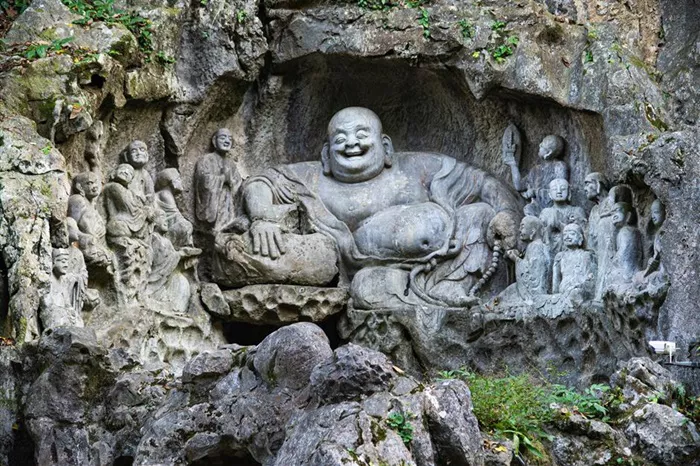A Buddhist archaeological team from the School of Archaeology and Museology of Shanxi University recently discovered a cliff-carved Buddha statue dating from the Northern Qi Dynasty (550-577) to the Sui Dynasty (581-618) during a field survey in Taiyuan, Shanxi Province.
Wang Wei, the team leader and associate professor of the School of Archaeology and Museology of Shanxi University, told the Global Times on Tuesday that the new discovery provides important evidence for the early spread of Buddhism along the north-south route in ancient China.
The Buddha statue is located near a rock shed in the north of Shicao Village, Yangxing County. It is a single Buddha statue carved on a vertical cliff.
The Buddha statue has a low head and a strong body. It wears a double-collared cassock and a knotted belt on its chest. The statue has one hand in a fearless gesture and the other in a praying gesture, with its right leg resting on its left leg. A short pleated cloth is hung in front of the base, adding a new stylistic element to the dating of the statue.
There is a flattened rectangular rock under the niche, which may be prepared for the final unfinished inscription. According to CCTV News, square holes on the sides of the statue suggest the existence of protective structures such as eaves or canopies.
“The statue displays several notable features of the Northern Qi Dynasty,” Wang told the Global Times.
“The low bun that fits closely to the curve of the head, the chest tie and the unique curved hem of the robe are typical features of Northern Qi Buddhist statues. In contrast, the head shape of Tang Dynasty statues is more obvious, and the hem is triangular or “peak-shaped.”
In the cave near the statue site, archaeologists also found the ruins of a temple. According to a fragment of a stone tablet found at the site, the temple is dedicated to the Nine Heavens Holy Mother and may date back to the Ming Dynasty (1368-1644) or the Qing Dynasty (1644-1911). Previously, this place
Neither the rock paintings nor the temple sites have been registered in any official cultural relics survey, so they add new cultural relics to the ongoing fourth national cultural relics survey.
Yangqu County is strategically located at a key point connecting the Xinding Basin and Jinzhong Basin, which were historically important channels for cultural exchanges between north and south China. Given its strategic location, this discovery further consolidates Yangqu’s role in the spread of early Buddhism and provides valuable archaeological evidence for the region’s importance. Mr. Wang said.
He also added that the newly discovered site is located in the northeast of Yangqu County, close to the historical route connecting Yu County and Dingxiang County.
“The Yangxing River, which flows through the area, has revealed multiple Buddhist stone tablets from the Northern Qi and Tang dynasties in previous surveys, including the important finds at Qiyan Mountain. Together, these sites point to an important Buddhist route that was connected to the ancient transportation network. ”
Shanxi Province has long been regarded as the birthplace of Chinese Buddhism and has one of the richest Buddhist sites in the country. From the Northern Wei capital of Pingcheng (now Datong) to the Yungang Grottoes, a UNESCO World Heritage Site, and numerous temples throughout the Taihang and Luliang Mountains, the region has played a key role in the introduction and flourishing of Buddhism in China since the 5th century.
Professor Wang pointed out that despite its small size, the newly discovered stone carving may be the earliest known Buddhist stone carving in Yangqu County, providing new material for the study of Buddhist art and religious dissemination in the region.

